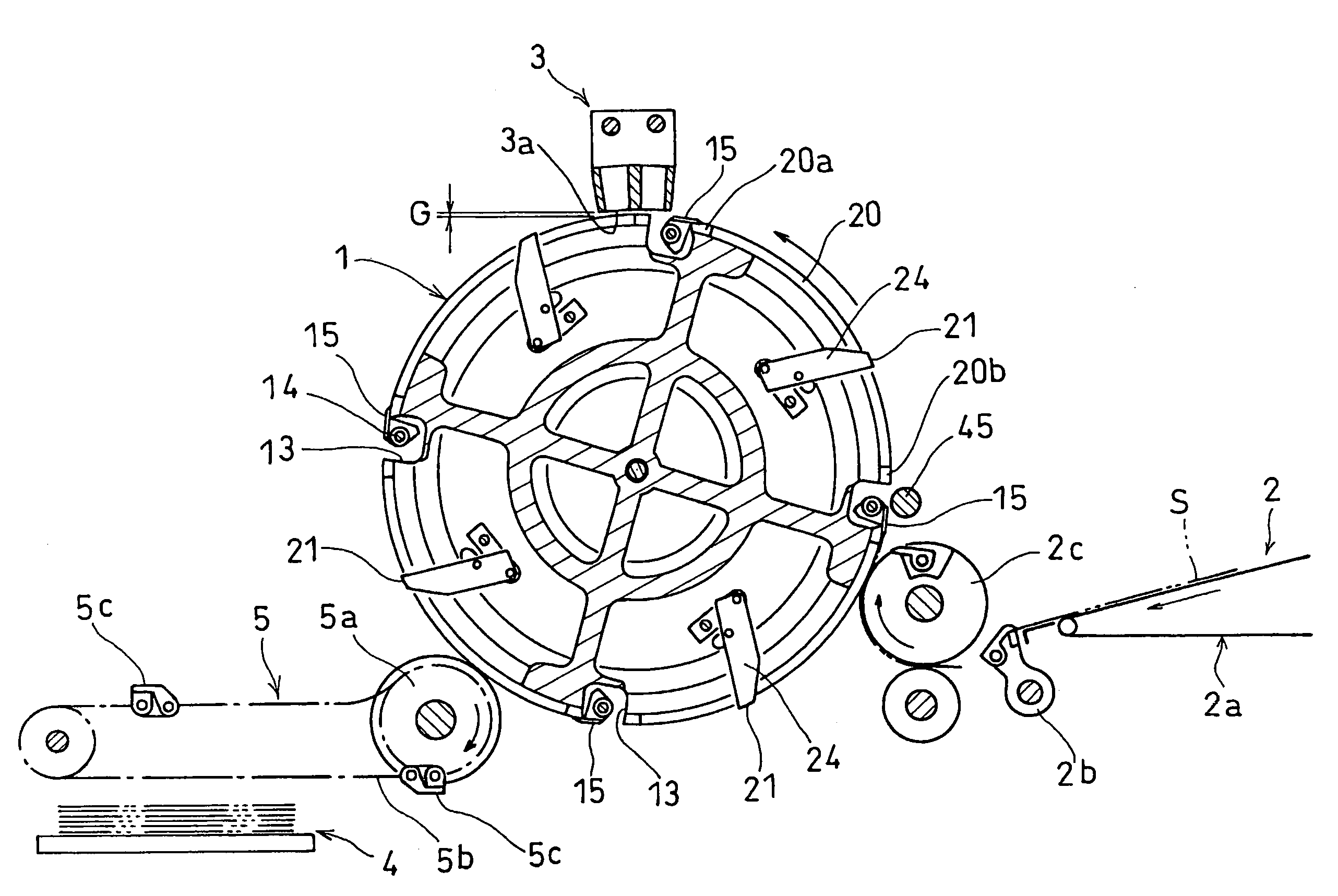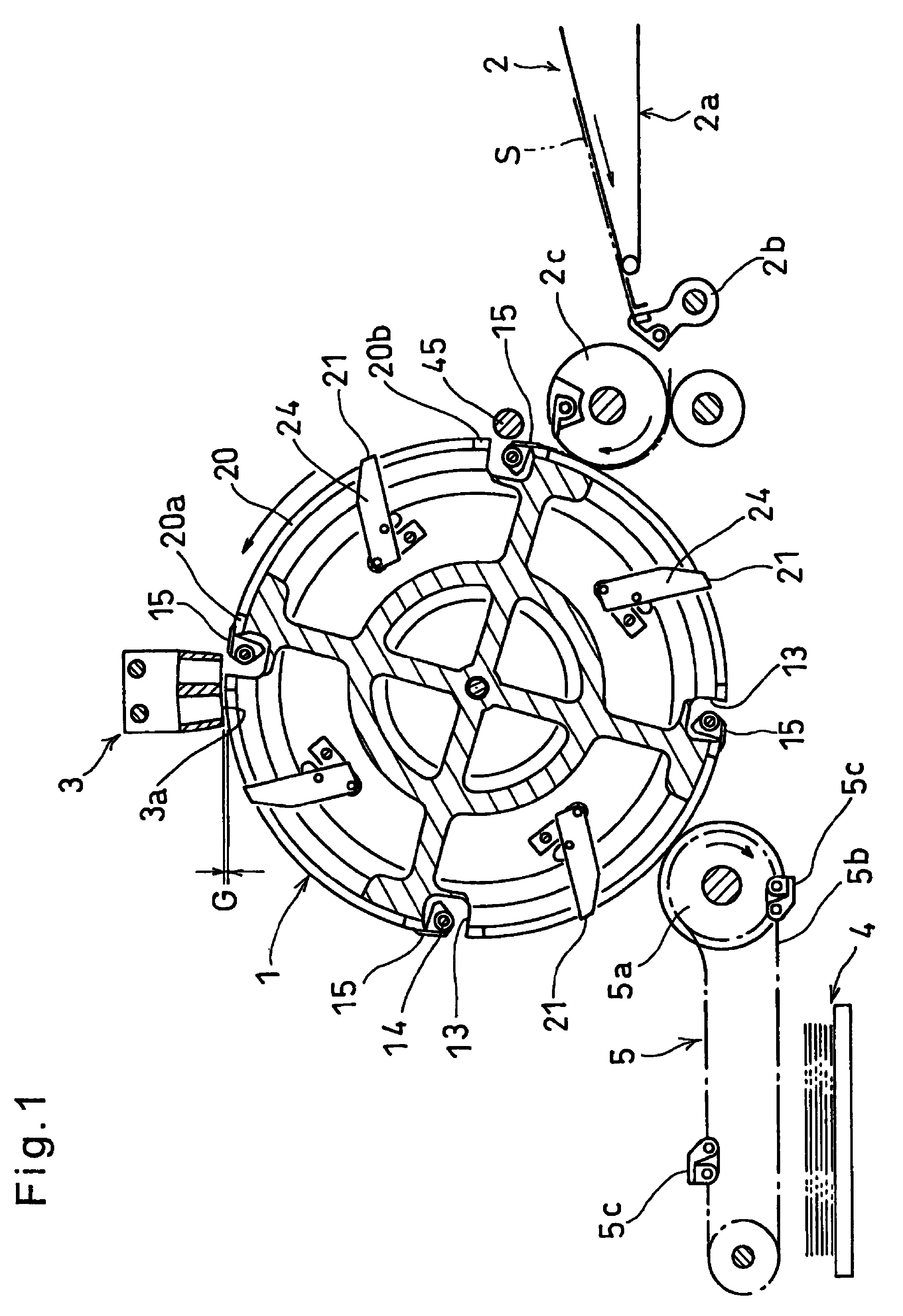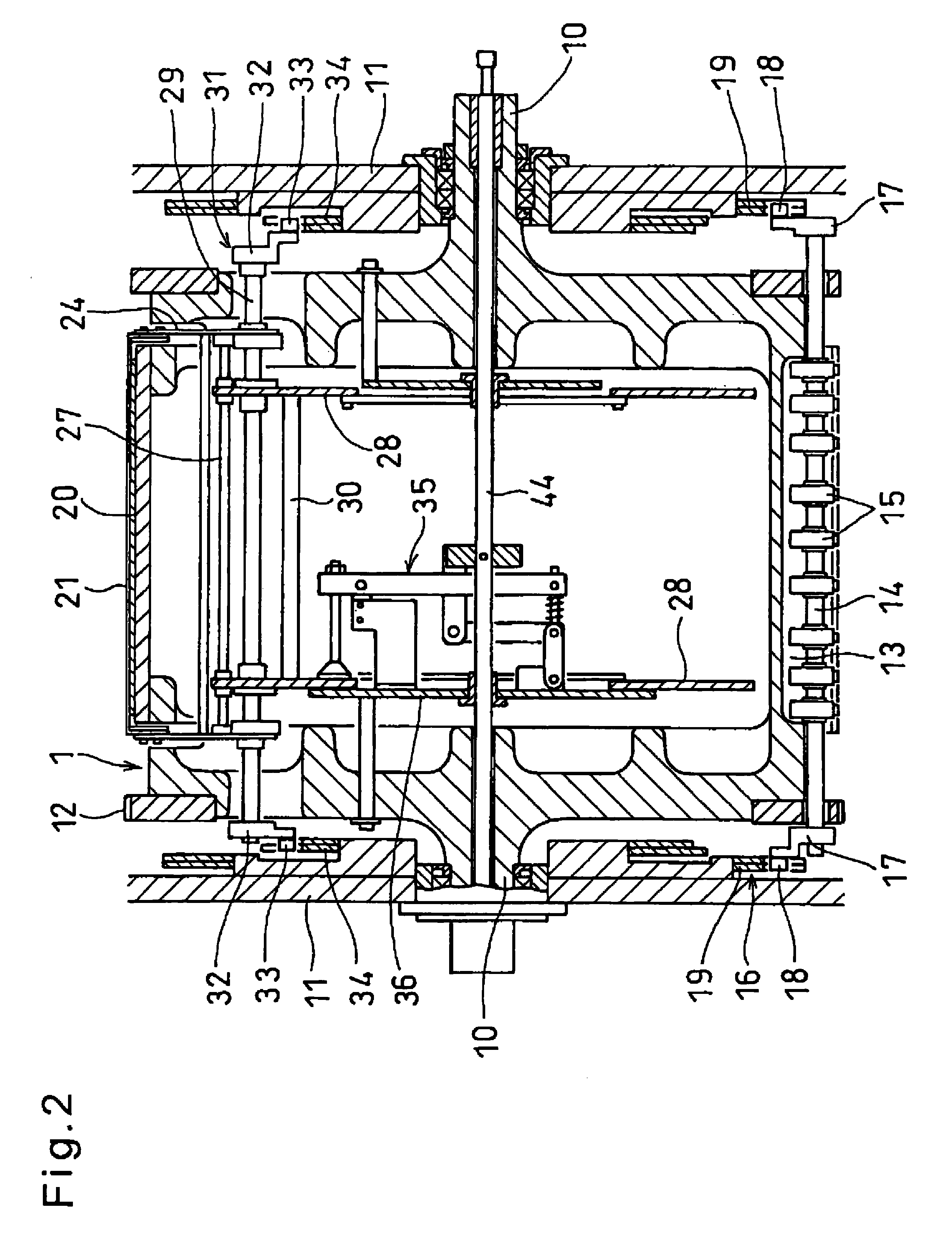Inkjet printing press
a printing press and inkjet technology, applied in the field of inkjet printing presses, can solve the problems of smudges or accidents, accurate printing, smudges on the print surface of sheets, etc., and achieve the effects of low rigidity, high quality printing, and small valu
- Summary
- Abstract
- Description
- Claims
- Application Information
AI Technical Summary
Benefits of technology
Problems solved by technology
Method used
Image
Examples
Embodiment Construction
[0034]Now an embodiment of this invention is described with reference to the drawings. As shown in FIG. 1, the printing press according to the present invention includes a rotary printing drum 1, a sheet feeder 2 for feeding sheets S to the printing drum 1, an inkjet head 3 facing the outer periphery of the printing drum 1 to jet ink to sheets S held on the periphery of the printing drum 1 and fed circumferentially for printing, and a sheet discharge unit 5 for receiving the printed sheets S from the printing drum 1 and feeding them to a sheet discharge station 4.
[0035]The sheet feeder 2 feeds sheets S one after another in one direction on a sheet conveyor 2a, grips the tip of the sheet S fed to the discharge end of the sheet conveyor 2a by a pivotal end of a swing gripper 2b, and pivots the swing gripper 2b toward a transfer cylinder 2c which is rotating in one direction to deliver the sheets S from the swing gripper 2b to holding claws provided on the transfer cylinder 2c and then...
PUM
 Login to View More
Login to View More Abstract
Description
Claims
Application Information
 Login to View More
Login to View More - R&D
- Intellectual Property
- Life Sciences
- Materials
- Tech Scout
- Unparalleled Data Quality
- Higher Quality Content
- 60% Fewer Hallucinations
Browse by: Latest US Patents, China's latest patents, Technical Efficacy Thesaurus, Application Domain, Technology Topic, Popular Technical Reports.
© 2025 PatSnap. All rights reserved.Legal|Privacy policy|Modern Slavery Act Transparency Statement|Sitemap|About US| Contact US: help@patsnap.com



